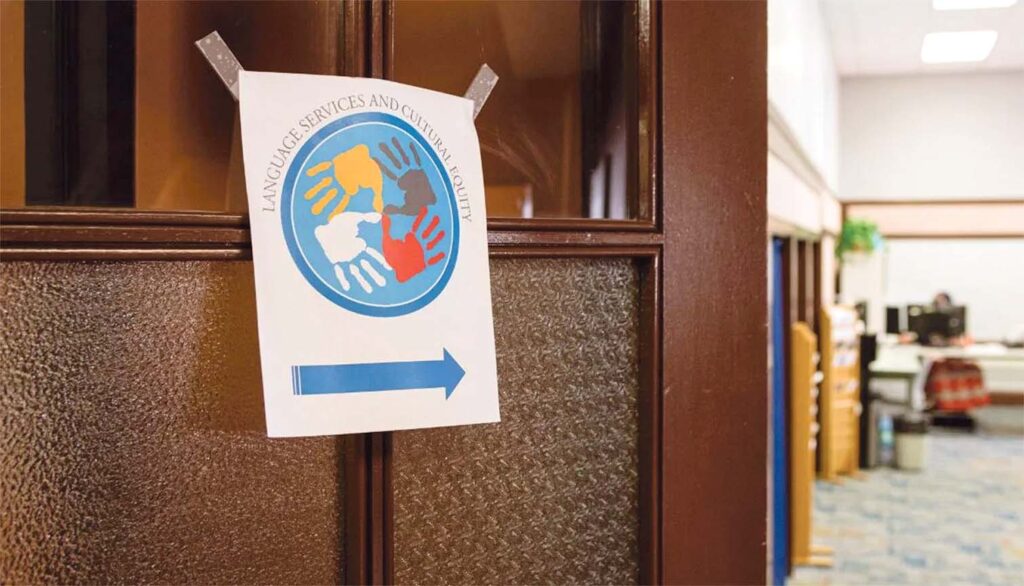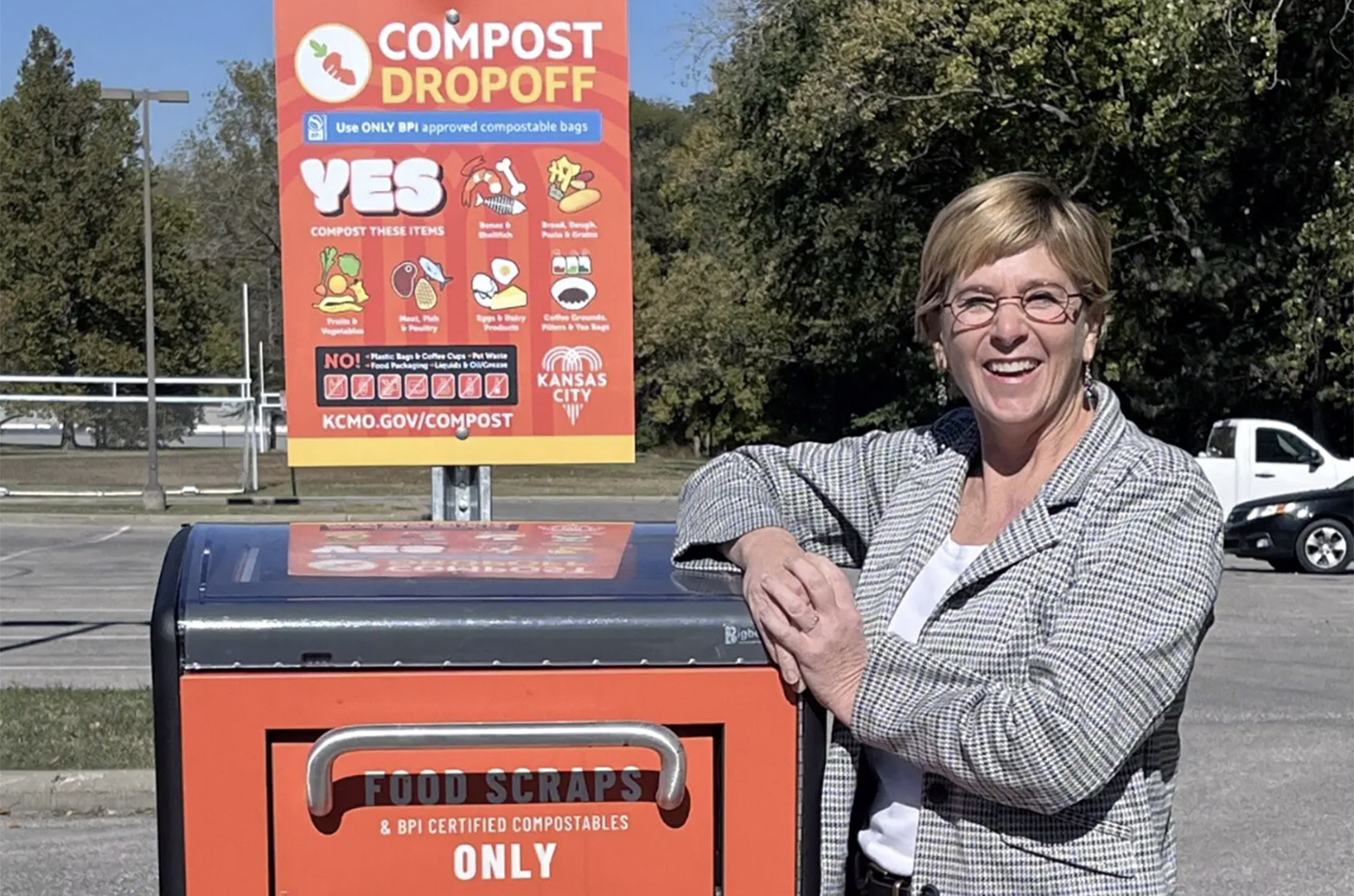Federal law requires that schools provide interpretation for families. But technology glitches, tight budgets and staffing issues can pose barriers

Maria Benevento
The Kansas City Beacon
After students pulled her fifth-grade daughter’s hair, hit and groped her, Wendy Rodas asked to talk with higher-ups in the Center School District.
The Spanish-speaking mother hoped the meeting would help resolve the bullying. But technical difficulties with the district’s phone interpretation service nearly derailed the conversation.
If she hadn’t brought along bilingual staff members from Revolución Educativa, a Latino education advocacy group, Rodas said the meeting would have been completely ineffective.
That marked the latest in a string of frustrations with school-provided interpretation that prompted Rodas to rely on her older son to help her communicate during meetings about her two school-aged children, now in second and sixth grades.
The Center district tries to be as responsive as possible to parent concerns and requests, but “interpretation is a challenge,” said Rick Chambers, director of communications.
“We’re a small district and we don’t have the financial resources to have full-time interpreters on staff,” he said. “We do rely on outside parties for that.”
Even though federal law mandates that schools offer interpreters and other services to overcome language gaps — both for school kids and their parents — families report they regularly come across barriers.
They say those barriers leave them more vulnerable to bullying and less safe, and they complicate school discipline and special education when English isn’t the primary language spoken at home.
“I’ve never had a parent call me just to say, ‘I asked for an interpreter and they said no,’” said Tricia McGhee, a Revolución Educativa parent advocate. “(But later) it comes up that they were denied language access, or that they don’t know that they had a right to it in the first place.”
School administrators sometimes don’t understand what makes for effective interpretation or struggle to find money to pay for it, said Katharine Allen, an interpreter, consultant and textbook author.
But competent interpretation, she said, can help avoid lawsuits and improve graduation rates, grades and special education outcomes.
“In the end,” Allen said, interpretation services save “everybody a lot of money” and reduce disparities.
Paying for interpretation in school
About a quarter of the students in Kansas City Public Schools are learning English as a second language, said Allyson Hile. She headed the district’s language services and cultural equity department and is now its director of organizational development. Hile said 40% of children in the district speak another language at home, spanning more than 50 languages.
While federal Title III grants for English language learners provide some tax dollars, Hile said more Missouri districts are competing for those grants, dividing up the state’s available funds. And the grants were never meant to fully fund language access.
That means schools have to pull money from state and local taxpayers to cover language services for parents and guardians.
Those budgets can be tight. The Kansas City district has closed two schools in the last year — and reversed course on a plan to shutter eight more — because of its shrinking student population. With fewer students, it gets fewer state tax dollars.
In North Kansas City, English language learner coordinator Lezlie Paden said her department sometimes exceeds its budget for interpretation because of unexpected growth in the number of families needing services. Since interpretation is a federal requirement, the district has to shift money in its budget to pay the cost.
Paden wants to give teachers more training to bridge language barriers, hire more on-call interpreters, pay those interpreters more and expand adult English classes. But the money isn’t there.
In the Independence School District, Fairmount Elementary principal Nicholas Younts uses three-way phone calls to communicate with families of the 30% of his students who speak Spanish at home.
But since delays sometimes happen before one of the district’s half-dozen interpreters is available, Younts said it can’t yet “provide the same opportunities immediately to all of our families.”
Younts said having a bilingual teacher join the school this year has been helpful. If money were no object, he’d like an in-house interpreter just for his school.
The current centralized interpreting system in Independence is designed to be streamlined and consistent for families, said the district’s lead interpreter, Julie Moreira-Fruits. But the workload is high. Each interpreter serves about 300 Spanish-speaking students.
“We could hire more and also look at more support for other languages,” she said. “Right now, we’re doing well by supporting and outsourcing those needs as they arise. But it is a challenge.”
Beyond money
Money isn’t the only barrier to meeting language needs.
When the first members of an immigrant or refugee group arrive, districts can struggle to find an interpreter fluent in both that language and English, Hile said. Those interpreters also need to understand the jargon-filled plans created to help a child needing special education or the security requirements of high-stakes standardized testing.
In Independence, Moreira-Fruits said staff in her department all have some form of interpreter training and have sometimes relied on collaboration with other districts or medical and legal interpreter training to refine their skills.
KCPS recently hired a language access manager to train teachers and other staff on how to use district tools and request interpretation. It looks for interpreters who know where families seek out information, whether through a Congolese church or a Facebook page catering to an ethnic community.
North Kansas City also seeks on-call interpreters with connections, such as those who are already familiar with the district, and starts them with simple assignments, Paden said. The district relies on outside agencies to provide trained interpreters for formal situations like special education meetings or disciplinary hearings.
Some districts also use contractors who work over the phone, automatic website translation and TalkingPoints, a text-based service that allows two-way communication between families and the school.
Filling the gaps
McGhee of Revolución Educativa said gaps remain for families who don’t speak English.
McGhee runs into technology glitches and limitations, parents encouraged to go without an interpreter for less formal conversations, and a lack of interpreters at public meetings unless they’re requested in advance. She said KCPS has been scheduling interpreters for public meetings.
She once volunteered to interpret for eight families during parent-teacher conferences at Lincoln College Prep Middle School after a mother told her she would rather have her child interpret than use a phone service.

McGhee said phone-based services come with problems. Sometimes it’s the technology. Other times, she said, school staff don’t understand how to help the interpreter keep up. That results in the interpreter giving a bare-bones summary, such as “your kid is doing well.”
“I just think about all the parents that didn’t get the opportunity to hear a teacher say what a joy or what a blessing it was to have their kid in school,” McGhee said.
Two professional organizations for education interpreting have sprung up in the past three years and are working on completing codes of ethics and designing certification tests, an area where the field lags behind other types of interpreting.
In fields like medical care, poor interpretation can be fatal and quickly obvious. When it comes to school, the effects of poor interpreting can take years to show up — perhaps when it’s too late to save a child’s academic career.
For example, bilingual children end up diagnosed with specific learning disabilities or speech impairments at a higher rate than their peers, said Ana Soler, chairperson of the National Association of Educational Translators and Interpreters of Spoken Languages. They don’t land in gifted education programs as frequently as other students.
“There must be some kind of communication breakdown” causing the gifted education disparity, she said. “Families may not receive information in their language, they may not know the process, they may think that it’s an extra class that they need to pay for.”
Allen, a founding member of the American Association of Interpreters and Translators in Education, said the fear of lawsuits and a growing school interpretation infrastructure have brought momentum for change.
“The tipping point looks like schools trying to do a better job communicating with their families, legislation requiring it, the legal system coming into play, the interpreting profession bringing in more resources,” she said. “You see it tip, and then it becomes a national sort of momentum behind it.”
This story was originally published by The Kansas City Beacon, an online news outlet focused on local, in-depth journalism in the public interest.
¿Quieres leer este post en inglés? ¡Aquí está la historia a continuación!



















